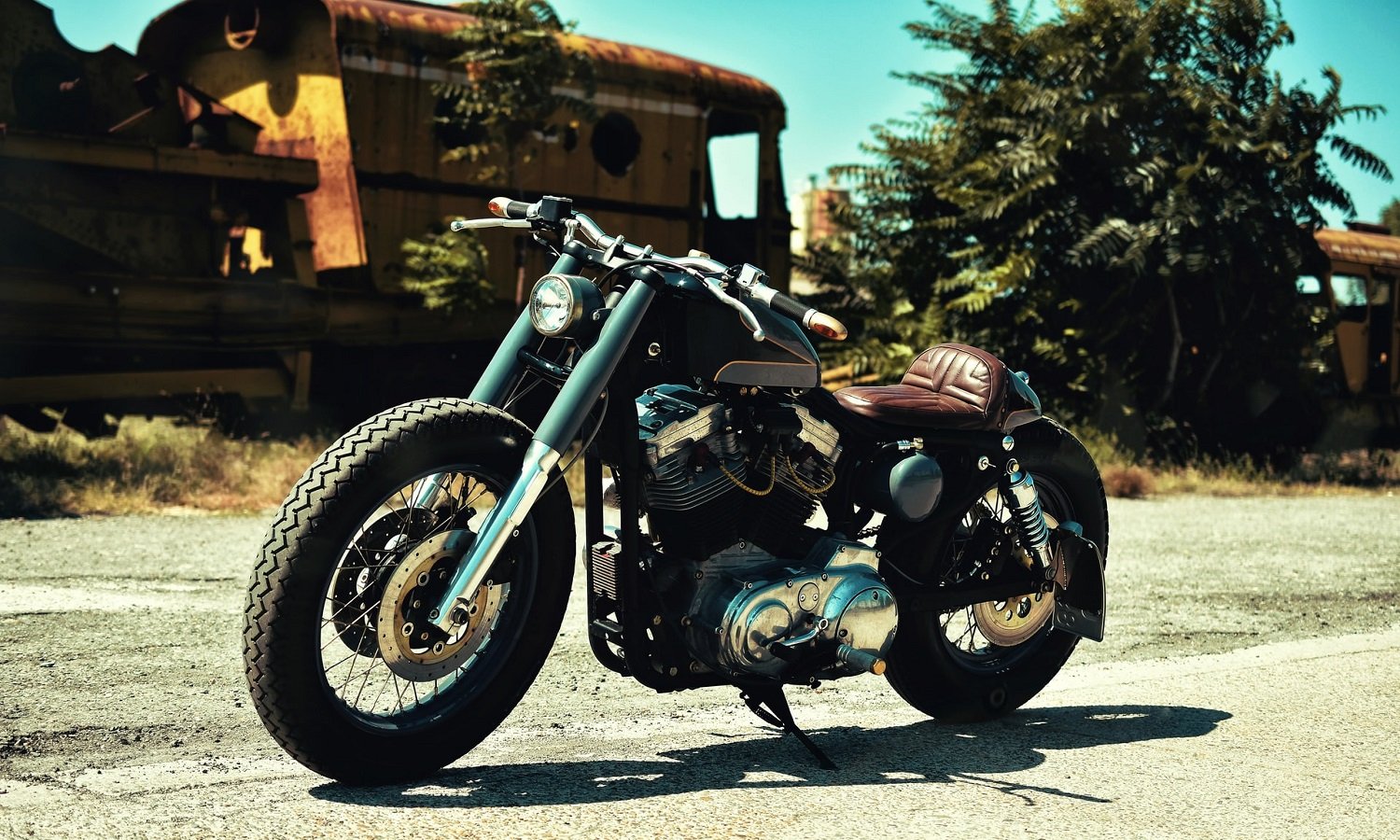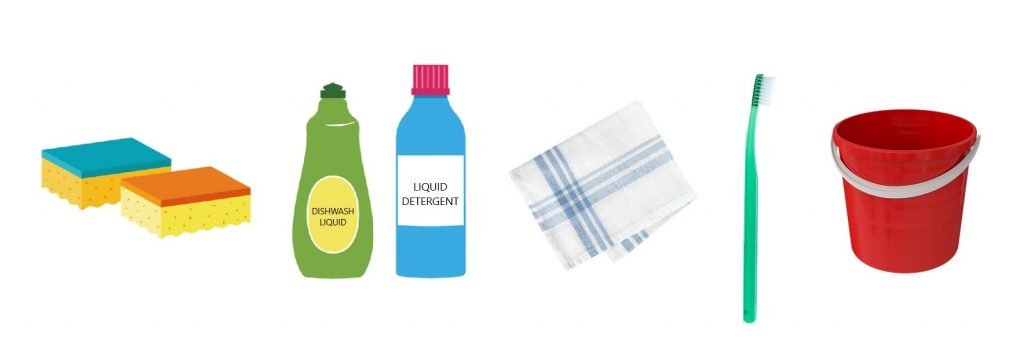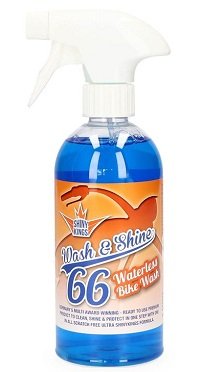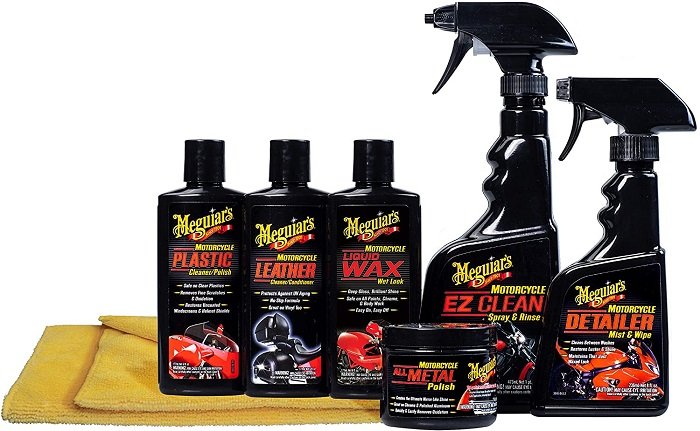How to wash your motorcycle
Updated on | By Mohit Chauhan

Reader Disclosure
Our editorial content is reader-supported. If you click on some of our links, we may earn a small commission. Learn more here.For many motorcyclists, washing their motorcycles is almost a gesture of love, they find it pleasing and relaxing. Each & everyone has their own formulas and secret tricks of the trade. It is often a very personal ritual. However, the important thing is to do it with patience. Precautions should be taken or else a simple wash can cause disaster.
Unlike cars, many parts of the motorcycles are exposed; transmission, electrical cables, engine, switches, and other mechanical instruments. It is therefore necessary to know how to act in order not to prevent any damage or compromise their functionality.
Shared below is a detailed step by step guide to wash your motorcycle. But before you start, it is important to cover the parts that could be damaged under the effect of splashes of water and soap; in particular, it is necessary to protect the front and rear lights, the indicators, the electrical controls on the handlebar, the seat lock, the ignition key, and the exhaust system.
Step by step guide to washing your motorcycle
1. Preparation
For the ideal wash it is best to find a place that is not excessively ventilated. The reason is simple: if too much air circulates, the detergent may dry on the metal or body parts, leaving marks or stains on the bike.
If your motorcycle does not have a center stand, the ideal thing to do is to get two stands, one for the front wheel and one for the rear. In this way, the bike, in addition to being stable and in an upright position, will be raised off the ground which will make the cleaning process of the lower parts much easier.
2. Soaking & degreasing
The beginning is the easiest part. After soaking the bike with water (better a traditional pump than a pressure washer whose jet may be too powerful), it is necessary to do a good pre-wash on the parts where most of the dirt accumulates: engine, wheels, exhaust, the front and back. Using the right degreasers, scrub off any grime that’s built up on your chain and around the wheels. You can use dishwashing liquid and water, for example. Not only are they easy to use, but they’re effective and reasonably affordable. But make sure you use more of water and less of soap.
Also, instead of using any old T-shirt or kitchen sponges, use a microfiber glove specially designed for cleaning bikes. This ensures that you do not scratch your fairings by mistake!
3. Quick rinsing
After initial soaking & degreasing, it is best to move on to an immediate rinse. This move allows us to see the real state of dirt, where the impurities that are difficult to remove are concentrated, so that we can proceed to a thorough washing in sensitive areas.
4. Shampooing
Proceed to a more thorough wash by shampooing the frame, engine and tank. The important thing is to have the right mixture of water and detergent in the bucket at our disposal. In fact, many people exaggerate with soap, being deceived by the foam. But to remove dirt, the surfactants contained in the detergent alone are not enough. You need a well-balanced mixture of shampoo and water. When shampooing, work from top to bottom so that the soap trickles over the bike.
5. Rinse with moderate pressure
A good motorcyclist never prefers to take the easy way out or to rush at the expense of his bike! Although the high-pressure hose may seem more practical for cleaning your bike, the damage can be considerable. The finish and the paintwork can deteriorate in no time, which could lead to oxidation of the metal parts.
Besides, while cleaning your motorcycle, high-pressure water can quickly get into the wrong places. So, if you want to preserve the integrity of your electrical circuits, do not use a high-pressure hose.
6. Do not wash immediately after riding
As you may know, metal usually expands when they are heated. So, to prevent them from suddenly cooling down when you wash your bike, we advise you to let it cool down after your little ride, else, the metal parts could shrink and become brittle.
At the same time, when cleaning your motorcycle, we recommend that you always use cold water. It is surprisingly much more effective in removing mud and other dirt.
7. Avoid the sun
As pointed above, heat is a factor you should avoid when washing your bike. If you care about the beautiful paint on your bike, you should avoid washing it in the sun.
8. Use dedicated products for degreasing (if possible)
Cleaning your motorcycle is more than just an aesthetic consideration. It means maintaining and protecting it against corrosion and wear. Make sure you degrease it with mild products that are easy to rinse off.
9. Use the right cloth after washing
Want to keep your bike’s bodywork looking its best? Then avoid scratching it. How do you do that? Simply by using a soft, damp cloth dedicated to your bike. Then you won’t leave any marks on your bodywork!
10. Prevent water from getting inside your bike
As a general rule, water does not mix well with metal. Hollow parts like the exhaust system are the most vulnerable to water stagnation. So, after you finish cleaning your bike, leave the engine running for a few minutes to prevent your exhaust from rusting.
11. Waxing
You don’t want to leave things in the middle, do you? So, it’s time to apply some wax that will make your bike look great! Choose a wax that is suitable for the body parts and use a dedicated sponge that comes along with the wax.
12. Lubrication
After cleaning and waxing, it is now time to lubricate parts that cause friction; such as your motorcycle chain. For best results, make sure you lubricate your motorcycle chain after warming it up for a few miles, as the warm chain absorbs grease better.
13. Cleaning frequency
Cleaning your motorcycle is the first step in maintaining and keeping it in good condition. In between big washes, regular maintenance is necessary to keep your bike in good condition. You can do this by regularly wiping down with a sponge to remove dirt and grime from your bike.
Washing & cleaning motorcycle chain
Dirt quickly accumulates on the motorcycle chain. Therefore, regular cleaning of the motorcycle chain is mandatory; roughly around every 1,500 kilometers, it should be cleaned of road dirt, tar residues and other debris.
Always clean the chain at the same time as you wash your motorcycle, as the dirt residue from the chain can otherwise contaminate the freshly polished motorcycle.
If the chain is very dirty, a wire brush can help remove the coarse and sticky dirt. You can use dedicated chain cleaners for this purpose, but make sure to wash it off after the exposure time. The clean chain can then be lubricated to protect it against moisture and corrosion. Allow the chain lubricant to soak in well and be sure to remove excess lubricant with a clean cloth after the drying time is completed.
Read more: How to clean your motorcycle chain
High-pressure cleaner or a water hose?
First of all, forget about the rotary nozzles, which have devastating effects because they are far too aggressive. Only V-shaped spray nozzles with limited power (ideally between 100 and 120 bars) should be used. In principle, washing the motorcycle with any kind of high-pressure cleaners should always be done with caution. The high pressure of the water jet can quickly damage delicate electrical parts on the motorcycle. Of course, some experts will swear that effective cleaning is only ensured by high-pressure cleaners, but are you willing to take that risk?
The safest technique is to use a water hose with a moderate amount of pressure. Of course, some stubborn dirt will still remain, such as oil stains on the chain guard, etc., but these can be removed using dedicated products or by using house hold detergents. While washing, avoid applying direct pressure on the wheel bearings, swingarm bearings, and column bearings. Even more important is to avoid the radiator fins, as this would bend the small aluminum cavities and affect the cooling of the bike.
How close should we hold the hose while washing motorcycle?
The distance is determined by the power of the water coming from the hose. For a domestic water hose, it is recommended to keep the hose at a distance between 30 and 40 cm from the surface to be cleaned. But for a powerful water jet, you should refer to the manufacturer’s manual (delivered with the motorcycle) where an angle of inclination and distance is generally specified.
Using household products to wash your motorcycle
Special motorcycle cleaning products are of course perfectly suited to cleaning your two-wheeler. You can find all kinds of them; degreasers, metal cleaners, plastic cleaners, etc. The advantage of these products is that they have a low concentration of chemicals so as not to damage the paint and the small fragile parts of a motorcycle.
However, the problem with these specific products is that they are sometimes very expensive. For general cleaning, dishwashing liquid will be your best weapon. It is an excellent degreaser that rinses well and you can clean absolutely everything with it, without risk of damaging anything. For small, specific things, like dirt and grime, you can find a wide range of cleaning products that will help you to keep your bike clean. By rubbing gently, you’ll get the grime off in a flash.

If you have big grease marks, around your chain for example, you can even use brake cleaner, which is a very powerful degreaser. However, avoid acetone at all costs, which will harm your paint at the slightest application.
Advice: Be careful with the sponge, don’t use the “scraper” side or you’ll scratch everything and will be totally baffled! For the cloths; it’s better to have several so that you can use a clean one as soon as the one you are using is dirty. Also, get an old toothbrush; it’s great for scrubbing in those hard-to-reach places. Add a bucket and you’ve got all the basics.
Use of detergents
If you clean your bike’s engine with a detergent and brush, there are three things you should keep in mind just like when using any other cleaning agent on your bike:
- Never use detergents in the blazing sun. The cleaning effect can be compromised and due to instant evaporation it might leave stains on the surface.
- Always follow the manufacturer’s instructions for use (especially the exposure time)
- Rinse off all the detergent thoroughly until no more foam is visible and, in the case of partial cleaning, also rinse off adjacent areas
Thorough drying is important
It is very important, especially when you are storing your bike (See: winterizing tips), that it is absolutely dry post washing. If you clean everything well and remove water from hard to access areas using an air jet, there is much less risk of oxidation.
The same applies to the metal parts which should be protected with an oil spray. For chrome and aluminum parts, there is a dedicated high-gloss polish available in the market.
For all painted plastic body parts, commercially available hard wax can be applied with a soft cloth or polishing sponge to protect the surface and for non-painted plastic parts there are relevant products or polishes that can do the job.
How to wash stubborn dirt?
Stubborn dirt should be soaked overnight with wet cloth and gentle dishwashing detergent before the big wash. This makes them easier to remove afterwards. Special cleaning sprays called stubborn dirt removers are also available in the market to get rid of them. Please note that if you try to scratch the dirt with a brush, you risk scratching the paint.
In order to remove really stubborn stains, and if you don’t have any specific “degreasing” products, you can use brake degreaser, applying the product not directly to the surface, but to a cloth (If it’s a painted part, spray a little brake cleaner on a microfiber cloth before rubbing). Afterwards, use a polishing compound to remove the remaining effects of a degreaser that is aggressive by nature.
On metal parts, for example a dirty frame rail, you can use tooth brush. A bit of lubricant (like WD-40) or brake degreaser on the frame, and rub to remove the dirt. Finally, a wipe with a rag (no need for microfiber this time, these frame parts are not very fragile) will complete this process, giving the part a new shine.
Rinsing off salt deposits with water
Salt is a metal killer because it causes corrosion. And rust is the enemy of all vehicles. This is especially true for motorcycles, because salt can get to sensitive mechanical parts much faster than it can on a car.
Anyone who now thinks that salt in the form of road salt is only spread on roads in winter is mistaken. In some states, for instance, salt is spread on roads in summer to protect the asphalt against the effects of sun. Warm water, by the way, is absolutely not suitable here, because it does not wash away the salt, but even intensifies the effect of corrosion.
Motorcycle cleaning without water
For years, the cleaning industry has tried to bring motorcycle cleaners to the market that do not require water. But motorcycle owners are afraid of chemical burns or damage to the paintwork on their machines. According to experts, such damage only happens if the products are used incorrectly.
While washing motorcycles or cars, it is obvious that huge quantities of water is required. Depending on the cleaning process, several hundred liters are used per vehicle. This wastage is detrimental to society and our environment.
There are many motorcycle cleaners that can be used without water. However, these are very expensive and even though you save a lot of water, you end up polluting the environment with harmful gasses.
Our recommendation: Wash & Shine 66 from ShinyKings California.

Similar to the dry cleaners that are available for cars, this product from the USA is by far the best product for motorcycles. This motorcycle cleaner is ideal not only on paints but also on chrome and other metal parts. Using its super cleaning formula, it removes even dried fork oil and stubborn dirt from your motorcycle.

Another solution and it’s the one our team is also using for years now; the Meguiar’s motorcycle cleaning kit.
Packed with everything a motorcycle owner needs to clean and protect the surface of motorcycle, this 7-piece kit from Meguiar’s premium range of products has everything a motorcycle owner needs.
Starting with cleaning and ending with waxing, this package includes all the necessary care products required to carry out thorough motorcycle cleaning. You will find spray cleaner, spray detailer, long-lasting wax, metal polish, plastic cleaner with polish, leather cleaner with conditioner, as well as a high-grade microfiber cloth. Besides, the formulation is PH balanced in order to prevent any delicate part to react with the composition.
How often should a motorcycle be washed?
Regular motorcycle care ensures that your bike maintains a striking appearance. But cleaning is also about maintenance, after all, safety can be compromised if critical parts are filled with dirt.
Ideally, before the winter break begins, the bike must be thoroughly cleaned. Because otherwise the dirt really settles and the subsequent cleaning is much more troublesome. And you should also give your motorcycle a wash before the start of the season.
This makes it easier to detect any damage that has occurred and you can repair it immediately. And even before you sell the motorcycle, a thorough cleaning is advised. If the bike looks as good as new, you have a good chance of achieving a higher price for the used motorcycle.
The frequency of washing depends completely on the riding habits. For cross bikers, cleaning should be on the agenda after every use. Recreational riders should also maintain their sportster after every race. And in case of casual riders, they should clean the bike after every long tour and otherwise depending on how dirty it is. If you are from colder regions and have to commute daily in winters as well, it is best to clean after every ride to remove dirt and especially road salt residues.
Important tips for washing your motorcycle
Regular cleaning helps to keep your bike as good as new and ensures that it retains its optimum value. After all, if you want to buy a used motorcycle, you first pay attention to the appearance. The time and money spent on motorcycle cleaning will thus pay off in the end. Shared below are some tips that you should keep in mind when washing your motorcycle:
- Don’t wait until dirt, chain grease, and grime have really settled in. Because if you remove the dirt regularly and after every long tour, cleaning demands less effort and time.
- Use motorcycle washing facilities or, if you are washing yourself, a washing station with an oil separator. This ensures that the waste water is not polluted. If you want to wash the motorcycle on a private property, ask the community beforehand whether this is permitted.
- Only use suitable agents to wash the motorcycle and, when using cleaning products, read the usage instructions and exposure times so that metal and plastic surfaces are not damaged, scratched, or stained. If you are using household products such as dishwashing liquid or detergent, stubborn dirt can be pretreated by soaking overnight and then removed more easily.
- When using compressed air, you must maintain a minimum distance so that components are not damaged.
- Prevent the buildup of dirt and rust by treating the motorcycle with polish after every wash and by using corrosion protectors. And when spraying the water for the first time, make sure that the bike has cooled down and is not parked in the blazing sun.
That’s all folks. Happy washing! 🙂




